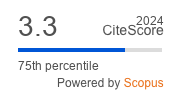Article | Open Access
The Italian Manosphere: Composition, Structure, and Functions of a Digital Network
| Views: | 2481 | | | Downloads: | 4370 |
Abstract: The digital sphere is pivotal in shaping social norms, and the Italian “manosphere” is a key player in this process. This study examines the composition and structure of the Italian manosphere, an intricate online ecosystem characterised by antifeminist and often misogynistic ideologies. Through a comprehensive analysis of Facebook networks and blog presentations from various groups, we mapped and classified the main actors within this ecosystem, shedding light on their connections and functions. The analysis focuses on two main aspects by employing natural language processing techniques and social network analysis. First, we investigated the functions of different groups within the network—Men’s Rights Activists, Men Going Their Own Way, Involuntary Celibates, and Pick‐Up Artists—identifying their roles, how they interconnect and their ties to the international manosphere. Second, we analysed the blog presentations of members to explore the motivations driving individuals to join these communities, revealing the key themes emerging from their narratives. Our findings highlight the manosphere as a complex and interconnected phenomenon that not only reflects global neosexist trends but also integrates unique socio‐cultural elements specific to the Italian context. This study underscores the significance of understanding the manosphere’s influence on public discourse and its far‐reaching implications for the socio‐political landscape in Italy, particularly concerning gender relations.
Keywords: digital sphere; Incels; misogyny; men’s rights activists; men going their own way; natural language processing; pick‐up artists; sexism; social movements
Supplementary Files:
Published:
© Elisa Ignazzi, Mara Maretti, Lara Fontanella. This is an open access article distributed under the terms of the Creative Commons Attribution 4.0 license (http://creativecommons.org/licenses/by/4.0), which permits any use, distribution, and reproduction of the work without further permission provided the original author(s) and source are credited.


